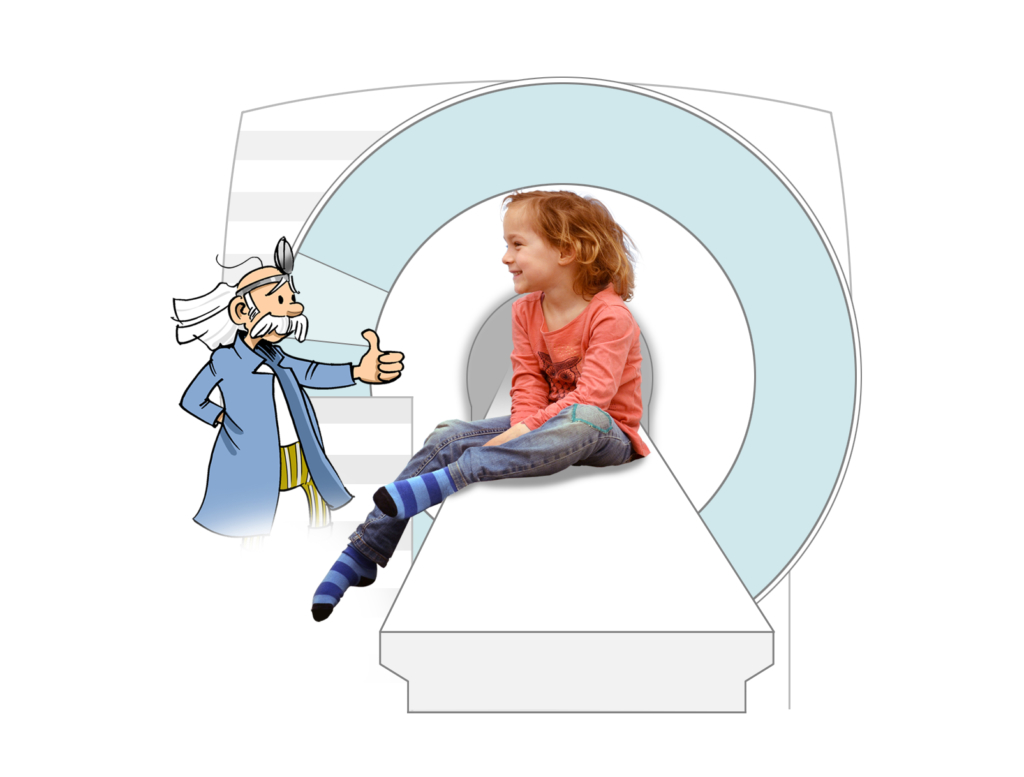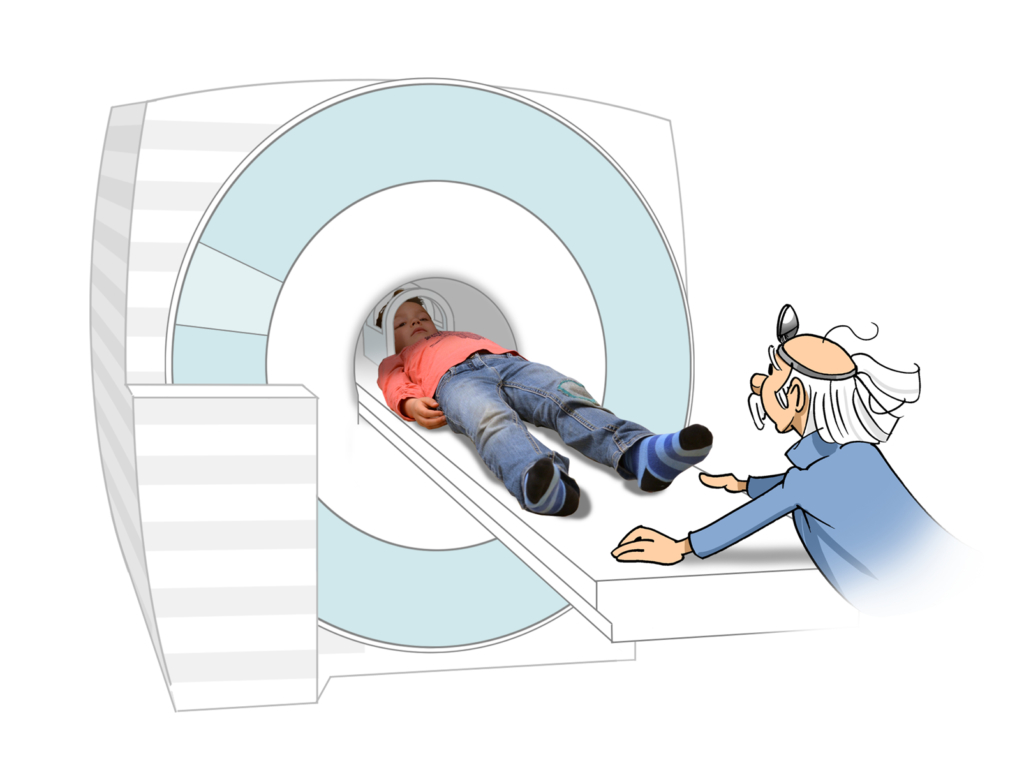MRI
What is MRI?
Magnetic Resonance Imaging (MRI) is a technique that can be used to examine not only the structure of the brain, but also its functioning. By measuring oxygen consumption, it can show which regions of the brain are particularly active while your child is performing various tasks. In research on reading, for example, this helps to better understand the differences between children who read well and those who do not. Unlike other imaging techniques, MRI uses strong magnetic fields and, therefore, does not require X-rays or contrast agents.
What happens during the study?

Before the MRI scan can begin, various preparations must be made. Due to the strong magnetic fields, no metallic objects are allowed in the room where the MRI machine is located. Therefore, it must be ensured that your child has no metal parts on or in their clothing.

Before the actual study begins, you and your child will have the opportunity to look at the facilities and the MRI machine. Your child will also be familiarized with how to communicate with the research team while lying in the MRI machine.

Since an MRI scan produces very loud noises, your child will be given noise-reducing earplugs.

When your child is ready, they will be slowly moved into the MRI scanner while lying down.

During the measurement of brain activity, your child will lie in the MRI scanner and work on tasks that are presented on a screen or through headphones. During the recording of brain structure, your child will simply lie still in the machine and, for example, watch a short movie. To ensure the quality of the measurement, it is necessary for your child to move as little as possible. There will be regular short breaks during the scan, during which your child can talk to the research team. If your child needs to use the bathroom or feels uncomfortable, they can interrupt or stop the scan at any time.
Since an MRI scan is a very unfamiliar situation, not only for children, a practice session in an MRI simulator will be conducted with your child before the actual scan. Your child will be gradually introduced to the specifics of the situation – such as the noise, lying still in a tube, and communicating via an intercom. This way, you and your child can try out in advance whether your child would like to participate in an MRI study.
What to keep in mind when participating?
- Before each MRI scan, a detailed questionnaire is used to determine whether there are any possible exclusion criteria.
- No metal parts must be worn on or in the body.
- If your child has braces or implants, the material they are made of must be clarified before participating.
- Ideally, your child should wear comfortable, metal-free clothing (e.g., sweatpants) during the MRI scan. These can be provided if needed.